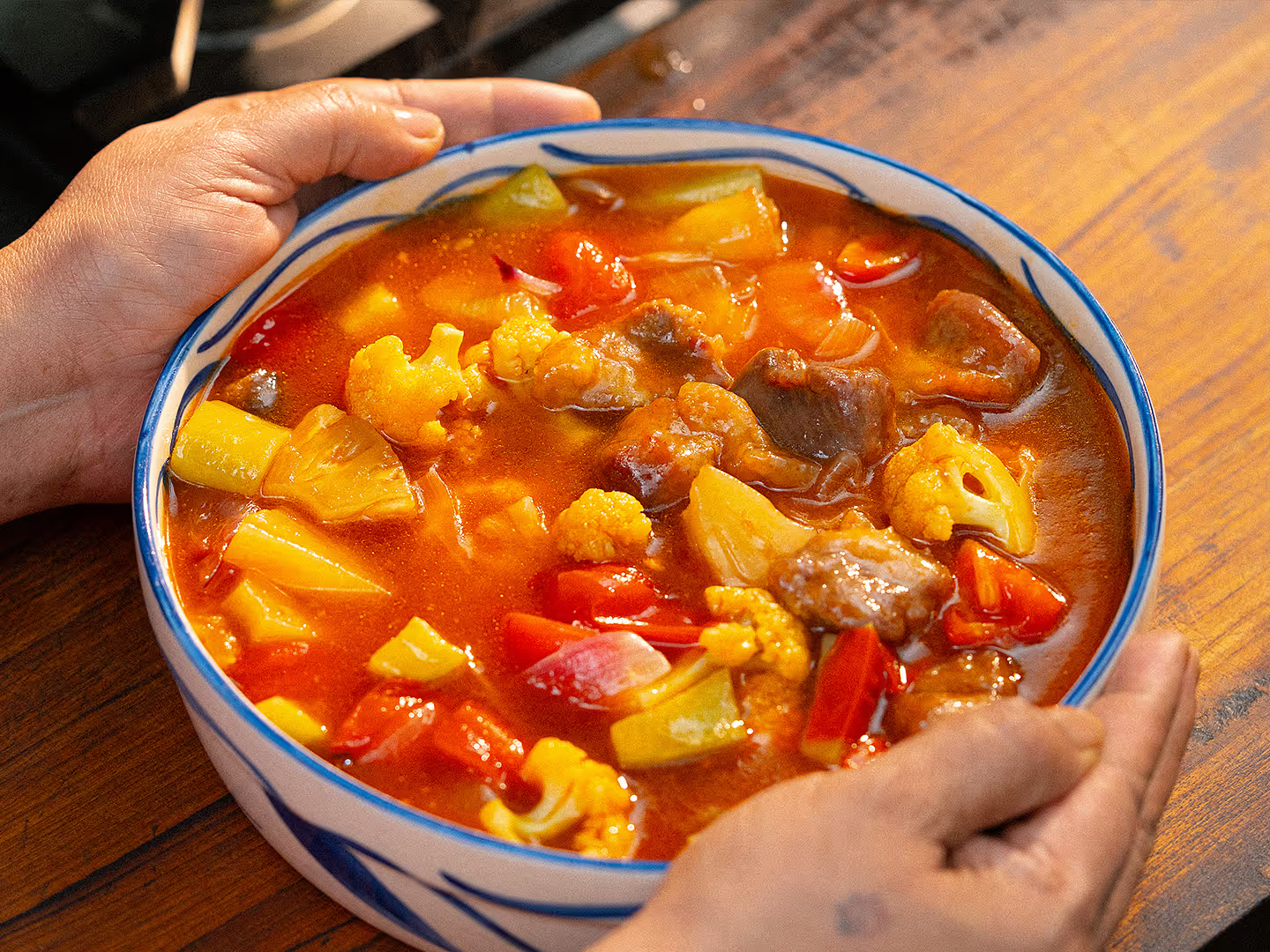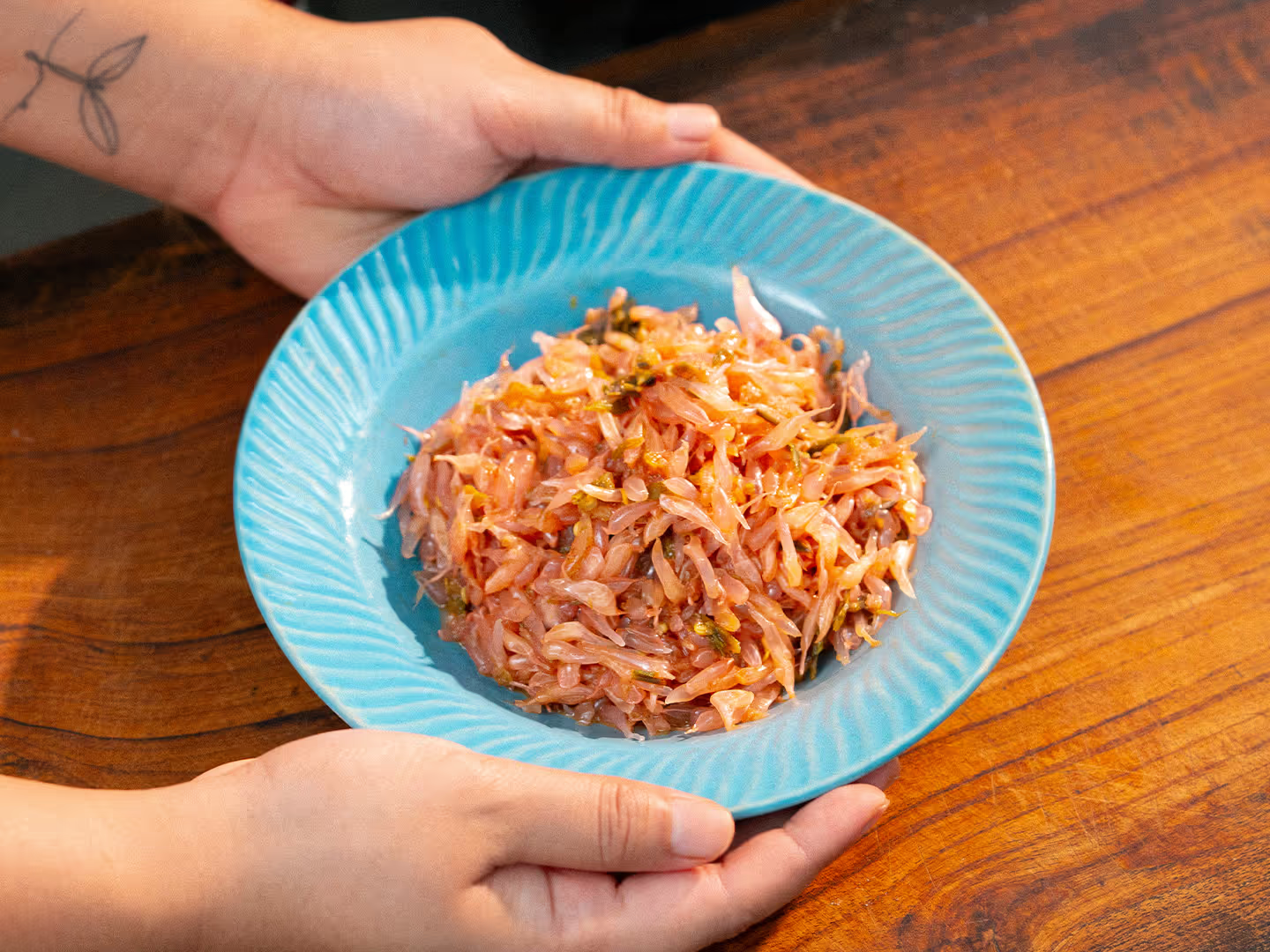Phulkopi’r Data Chorchori
Cauliflower stalks in a fiery mish-mash with seasonal vegetables in this no-waste Bengali recipe
- Cooking time1 hour
- Calorieskcal
Phulkopi’r data (the stalk of cauliflower) is the main ingredient in this chorchori (a spicy mish-mash). This preparation is best made when cauliflower is in season during the winter months. The stalk of such cauliflower is kochi (tender), which means not only that it is less fibrous than off-season cauliflower stalk but that it is also less astringent. Other vegetables in this chorchori—potatoes, pumpkin, brinjal, tomatoes—add a variety of flavours and textures. The dominant spice is mustard paste, which lends it a fiery character. The phulkopi’r data, though cooked twice—first steamed and then sautéed—retain their bite. Fried dal’er bori (sun-dried lentil dumplings) adds nuttiness and crunch to contrast with the otherwise mushy texture of the chachchari.
Frequently Asked Questions
Books in this recipe
Ingredients
- 150 g phulkopir data (cauliflower stalks)
- 120 g pumpkin
- 80 g brinjal
- 60 g sheem (broad beans)
- 20 g tomato
- 60 g potato
- 3 pcs green chillies
- 6 g coriander leaves
- 25 g mustard seeds
- 35 g mustard oil
- 1 pc dried red chilli
- ¼ tsp kaalo jeere (nigella seeds)
- ¼ tsp turmeric
- 6 pcs bori
- 10 g salt
- 15 g sugar
Method
- Soak mustard seeds (we like to use half yellow and half brown mustard) in water for at least 2 hours. Grind them to a fine paste along with 2 green chillies and 60 g water. Set aside.
- Separate the stalk from the cauliflower and wash them thoroughly. Cut them into fine, 2-mm matchsticks. For thicker stalk, you may have to divide them horizontally to flatten them.
- Place the chopped stalk in a saucepan with 3 g salt and 100 g water. Cover and steam for 8 minutes, after which strain and set the water aside. You may need it during the cooking.
- While the stalk is steaming, cut potatoes in 2-cm-wide wedges, pumpkin in 3-cm cubes and brinjal in 5-cm-long segments. Also halve the sheem, roughly chop the tomato, slit green chillies and finely chop coriander leaves.
- Heat 20 g mustard oil in a pan. Fry the dal’er bori in it for about 20 seconds until golden-brown. Set aside.
- Now temper the oil with dried red chillies and kaalo jeere.
- Add potatoes and stir-fry them on medium heat for 2 minutes. Then add pumpkin and fry for 2 minutes. Similarly, add the sheem and brinjal, both at 2-minute intervals from one another and continue frying. Add the tomatoes.
- Next, add turmeric, salt and sugar and continue frying. Then add the steamed cauliflower stalk.
- After about 2 minutes add the mustard paste. Saute on medium heat until the raw smell of mustard is gone. This should take about 5 minutes. If during this time you find the mustard sticking to the pan, deglaze it with a splash of the water left behind from steaming the stalk.
- Break up the fried bori into tiny shards and add it to the pan, along with a slit green chilli. Cook for a couple more minutes before adding chopped coriander.
- Serve with steaming rice and a light dal.

























